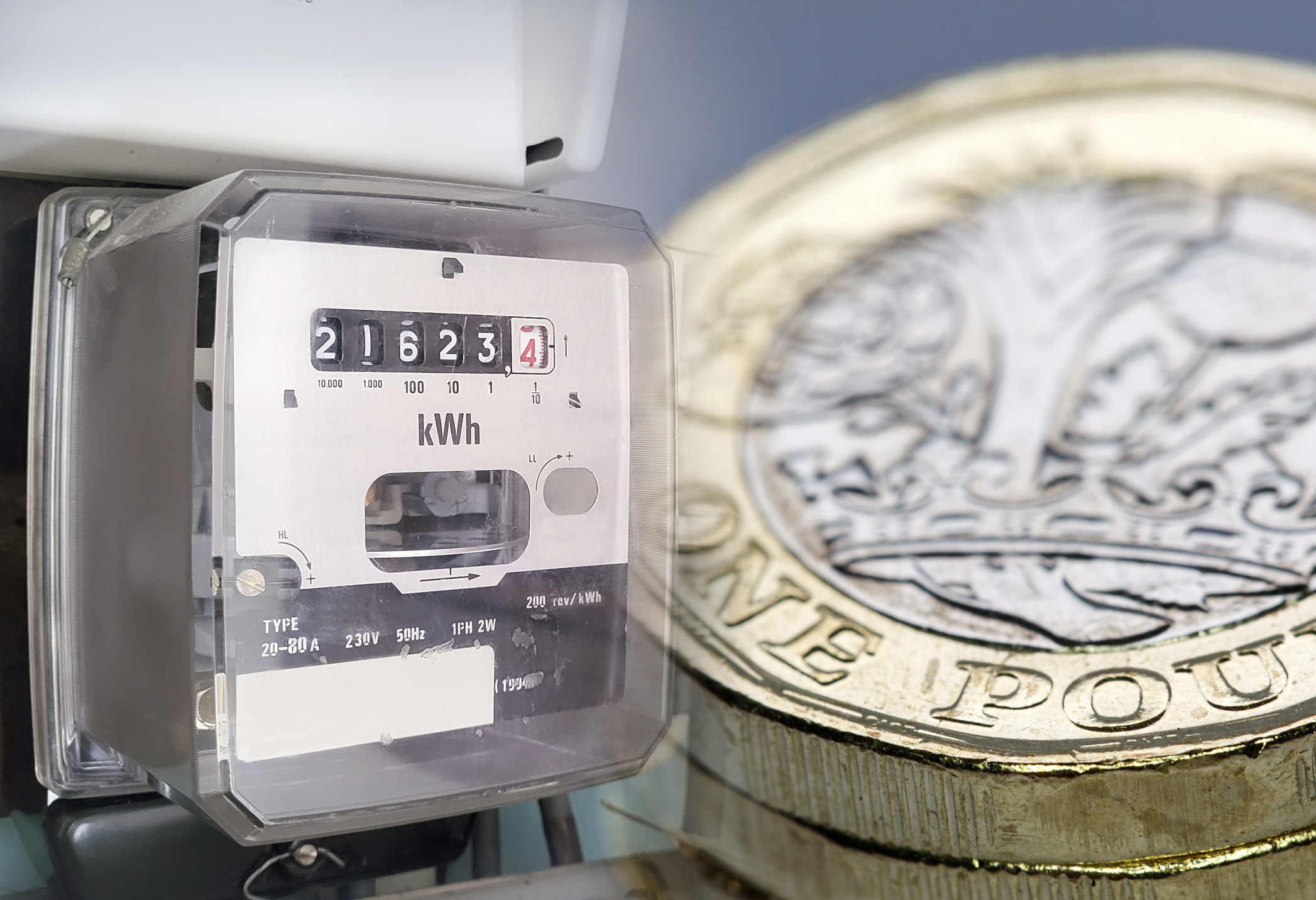Ofgem energy price cap to give UK households summer cost of living boost
The Ofgem energy price cap will fall again from July. Here's what it means for your gas and electricity bills.


Most households will enjoy a cost of living boost this summer after it was announced the Ofgem energy price cap will fall 7%.
The news means the average home's gas and electricity bill will drop £122 a year (£10 a month) to £1,568 in July. It follows a 12% fall in the cap in April. The fall was on a par with what experts had predicted, and came as wholesale prices trickled down to within touching distance of pre-crisis levels.
However, there have been warnings that energy prices could soar this autumn and winter, with experts urging political parties on the general election campaign trail to reform the price cap. Ofgem recently launched a consultation on whether to scrap it in light of the UK’s net-zero push.
MoneyWeek
Subscribe to MoneyWeek today and get your first six magazine issues absolutely FREE

Sign up to Money Morning
Don't miss the latest investment and personal finances news, market analysis, plus money-saving tips with our free twice-daily newsletter
Don't miss the latest investment and personal finances news, market analysis, plus money-saving tips with our free twice-daily newsletter
Energy prices are expected to remain relatively stable over the next two price cap periods. But while fixed deals have returned to the market, very few are competitive with the rate of the cap.
Ofgem energy price cap falls by fifth year-on-year
Energy bills for a typical household will tumble to £1,568 per year from 1 July for around 28 million households. The 7% fall means energy bills will be £10 a month cheaper than they currently are.
Compared to July 2023, when the price cap took over from the Energy Price Guarantee as the de facto energy bills rate for most bill payers, prices will have plummeted 21% (£408) when the new energy bills rate comes in.
This means the average bill will have gone from £165 per month to £131 year-on-year by this summer. But costs still remain significantly above where they were when the energy crisis began in the autumn of 2021. Back then, the price cap was £1,370 a year - 14% lower than the July cap and almost a quarter below current energy prices. The fixed deals on offer at the time were likely to be cheaper still, with many coming in below £1,000 a year.
The unit rates under the new cap (for those paying via direct debit) will be:
| Fuel | Price per kilowatt hour (kWh) | Standing charge (per day) |
| Gas | 5.48p | 31.41p |
| Electricity | 22.36p | 60.12p |
While standing charges have remained unchanged, they will still come in at £334 a year for a dual fuel household. So, in essence, you will be paying more than £30 a month before you've used any energy. The figure rises to £369 for standard credit bill payers.
What does the new Ofgem energy price cap mean for my energy bills?
The price cap announcement will affect around 28 million households in just over a month's time. According to Ofgem, there are roughly 18 million people in the UK who are on a standard variable tariff (SVT - the type of energy deal governed by the price cap), and pay via direct debit. This is the cheapest way of paying for your energy on this type of tariff.
Ofgem said a further five million households are on 'standard credit' SVTs (i.e. they pay their bill after using the energy they've been charged for), with four million homes on an SVT via a prepayment meter. Another four million households have signed up for a fixed tariff, and are therefore unaffected by the new price cap.
A key thing to note is that the only Ofgem figure that really matters when it comes to the price cap is the 7% fall. This is because the cash figures given by Ofgem solely apply to the energy regulator’s idea of a typical household.
The price cap sets a limit on what you can be charged per kilowatt hour (kWh) for your gas and electricity. It also limits how high standing charges can be. The exact figures vary depending on what region you live in. So, not only will your final bill depend on how much energy you use, but it will also hinge on your postcode.
Another thing to be aware of is that today’s news will not impact your energy bills until 1 July. So, you won’t need to take a meter reading until the end of June. The new rate will then apply for three months, as Ofgem sets rates on a quarterly basis.
Cornwall Insight: ‘bad news on the way this winter’
The latest Ofgem energy price cap came in almost exactly the same as forecasts had suggested. Earlier this week, Cornwall Insight had said the annual figure would be £1,574 - just £6 higher than the eventual figure we received on Friday (24 May) - as a result of lower wholesale prices since the turn of the year.
But the energy consultancy warned the good news could be short-lived. It said it now expects domestic gas and electricity prices will rise 12% from October to an annual figure of £1,762, and will remain close to this level for the January 2025 price cap.
Welcoming the reintroduction of the Warm Home Discount benefit for next winter, principal consultant at Cornwall Insight, Dr Craig Lowrey, said: “The anticipated rise in bills as we move into the winter months, emphasises the continued volatility of the market and the importance of providing protection for vulnerable households.
“It is clear the cap in its current form is not going to bring down bills to pre-crisis levels. However, while the general election is likely to put a halt to any immediate reforms to household energy bills, parties may use this opportunity to highlight how they intend to approach this challenge in the future.”
His comments were echoed by energy supplier trade body Energy UK, which said it wants the next government to work with the industry and Ofgem to find a "long-term solution" to high energy bills and soaring consumer debt levels.
Comparison website Uswitch said the latest forecasts meant there were “storm clouds on the horizon” for households. It urged people to consider fixed-rate deals.
Will Owen, the site’s energy expert, said: “If you’d prefer to avoid the uncertainty of rising costs in winter, now is a good time to think about taking a fixed energy deal, which would let you lock in rates while prices are cheaper. Fixed energy tariffs are the cheapest they’ve been since summer 2021 and there are some great value deals currently worth considering.”
Any increase to energy bills later this year would also come as bad news to the next government. Energy bills were one of the key reasons why inflation, as measured by the Consumer Prices Index (CPI), fell to 2.3% in April. The latest forecasts suggest there could be a spike in the headline rate later this year - something which could keep interest rates higher for longer.
Get the latest financial news, insights and expert analysis from our award-winning MoneyWeek team, to help you understand what really matters when it comes to your finances.
Henry Sandercock has spent more than eight years as a journalist covering a wide variety of beats. Having studied for an MA in journalism at the University of Kent, he started his career in the garden of England as a reporter for local TV channel KMTV.
Henry then worked at the BBC for three years as a radio producer - mostly on BBC Radio 2 with Jeremy Vine, but also on major BBC Radio 4 programmes like The World at One, PM and Broadcasting House. Switching to print media, he covered fresh foods for respected magazine The Grocer for two years.
After moving to NationalWorld.com - a national news site run by the publisher of The Scotsman and Yorkshire Post - Henry began reporting on the cost of living crisis, becoming the title’s money editor in early 2023. He covered everything from the energy crisis to scams, and inflation. He also has bylines in MoneyWeek.
-
 8 of the best ski chalets for sale now
8 of the best ski chalets for sale nowThe best ski chalets on the market – from a traditional Alpine-style chalet in Switzerland to an award-winning Modernist building in Japan’s exclusive ski areas
-
 Did COP30 achieve anything to tackle climate change?
Did COP30 achieve anything to tackle climate change?The COP30 summit was a failure. But the world is going green regardless, says Simon Wilson
